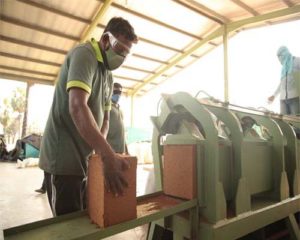BOI initiates five new power projects in Jaffna


In order to implement the government’s objective to promote regional industrialization, the Board of Investment (BOI) has initiated to setup five new power generation projects in the Jaffna District, which is one of the main districts in the northern province where the BOI has targeted for development through foreign direct investment.
Among the five new power generation projects Joule Power (Pvt) Ltd with an investment of LKR 2,946.915 Mn and Beta Power (Pvt) Ltd with an investment of LKR 3,103.4 Mn have already commenced their operations. These projects will contribute 10MW from each project to increase the share, by the end of the next decade, of electric generation by the renewable energy supply.
Another two more power generation projects under the purview of the BOI are awaiting commercial operation. Vayu Sakthi Vitpannar (Pvt) Ltd with an investment of LKR.2,216.5 Mn and Yarl Vayu Pagavan (Pvt) Ltd with an Investment of LKR.2,244.402 Mn will additionally contribute 10 MW of electricity to the national grid. The contribution of these projects will reduce the dependence on electric generation by fossil fuel sources.
Sakthi Agro International (Pvt) Ltd is a manufacturing base Investment under the BOI regime. It is awaiting Commercial Operation. This company will be engaged in the manufacture of coconut fiber products and will utilize 35,000-40,000 coconut husks per day for their manufacturing process. This will be an Rs.72.75 Mn investment. The project will initially provide employment to nearly 35 staff. These coco peat fiber products will be exported to discerning markets such as the USA, Netherland, Malaysia and Japan.
Among the existing investments under BOI in the Northern Province are 6 Apparel Manufacturers and 15 other projects. When these are all operational the total investment will be LKR 16,293 million and the total employment generation will be for 837 workers.
As a result of foreign direct investment BOI has been successful in creating a significant impact in developing local economies by generating employment opportunities boosting exports and new technology transfers.






